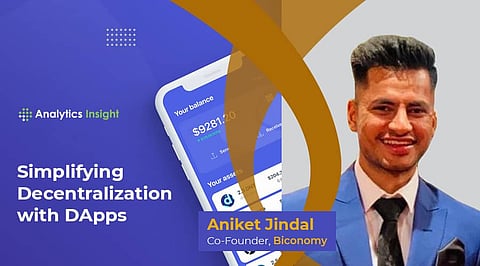

Decentralization has been a unique aspect of blockchain technology and has acted as a driving force behind its substantial success and adoption. Decentralization means having no central authority. In the blockchain, it refers to having no single point of failure or no central authority to control the network. It enables a decentralized network wherein every node is of importance and there is transparency at all levels. This concept has been one of the key factors in the current Web3 wave where primarily, decentralized finance and decentralized applications are driving the ecosystem.
According to daily dApp statistics, there are 3500+ dApps across all spheres with an average daily active users base of 116K+ and daily transactions amounting close to 2.03M today.
From finance to gaming, dApps have found their use in a variety of industries due to their security and transparency.
But even with these phenomenal numbers, the dApp space is not the most user-friendly yet. And when compared to mobile applications, they fall short. There are over 2 million mobile apps available for download on Google Play Store while 1.8 million are on Apple App Store, with mobile apps downloads reaching 218 billion in 2020, according to App Annie's annual 'State of Mobile' industry report.
But why do we need dApps in the first place?
A dApp is an open-source application that is built on a decentralized peer-to-peer network or a public blockchain that combines a smart contract and a frontend user interface. The logic behind dApps is dependent on the rules of the smart contract and the backend of the application is not controlled by a central authority; rather it is managed by a decentralized network.
The appearance and functions of dApp are similar to mobile applications. But there are certain differences that make dApps more desirable-
Given the above features, they can find their use-case in various industries, for example as a way of establishing secure payment systems, facilitating efficient supply chain management, preventing data duplication in healthcare systems, etc.
The blockchain space has been working towards mass adoption with a focus on including non-tech-savvy users. DApps have provided some relief but they are still not as ubiquitous as mobile applications (yet!).
The key factor in the mass adoption of mobile applications has been the quick development of user-friendly applications that are now the norm. Considering the number of users that can be reached via smartphones, dApps have a thriving market to tap into by improving its UI/UX.
Given the current dApps status, they are fairly famous in the tech community but still have not been able to tap into the non-tech community at large. There have been many factors contributing to it:
Major dApps are rolling out updates that show dApps working towards being user-friendly. For example, the latest UniSwap v2 update allows token flexibility, discourages price manipulations, and allows easy token withdrawals in different payment methods. Furthermore, there are players in the industry that ensure dApps user adoption by eliminating gas fees, providing API and SDKs that remove complexities, enabling instant transactions, like Biconomy.
DApps can transform the way traditional systems work through the integration of blockchain technology and easy user access. This is just the tip of what dApps can achieve with focused developments and advancements. Given that blockchain technology is rapidly finding use in different sectors already, dApps might become the norm soon.
Join our WhatsApp Channel to get the latest news, exclusives and videos on WhatsApp
_____________
Disclaimer: Analytics Insight does not provide financial advice or guidance. Also note that the cryptocurrencies mentioned/listed on the website could potentially be scams, i.e. designed to induce you to invest financial resources that may be lost forever and not be recoverable once investments are made. You are responsible for conducting your own research (DYOR) before making any investments. Read more here.
